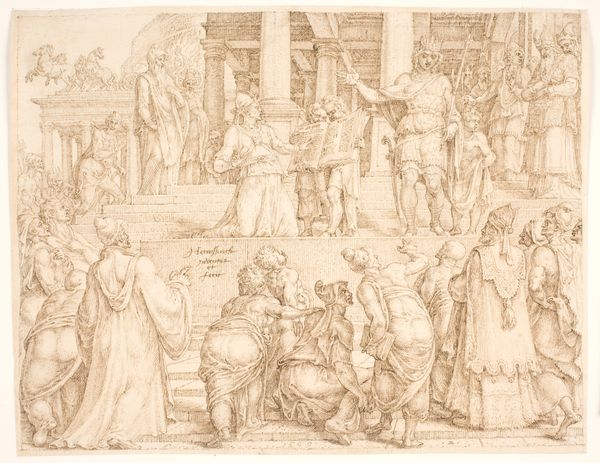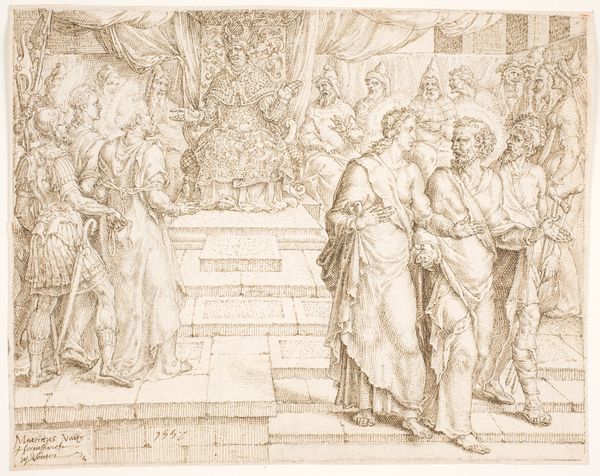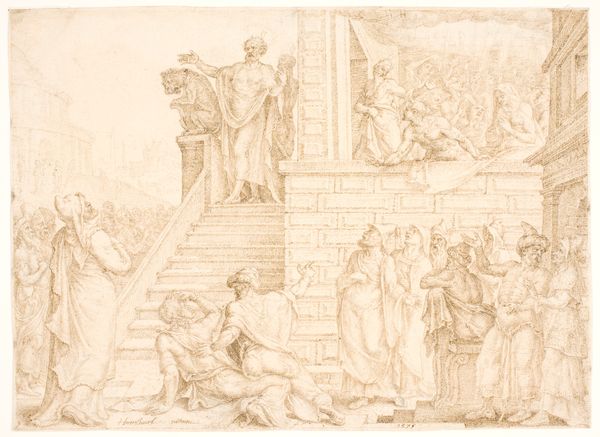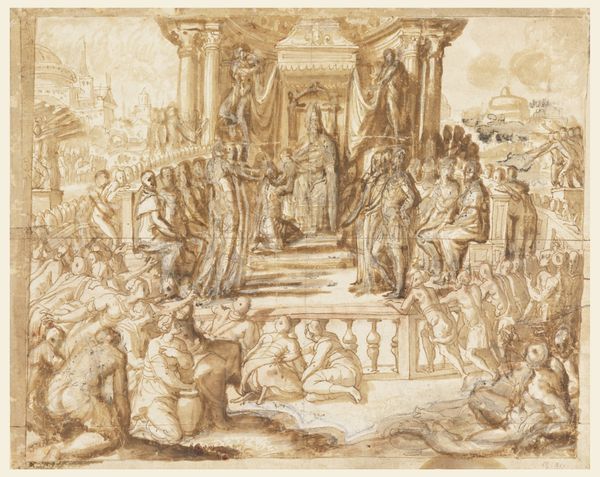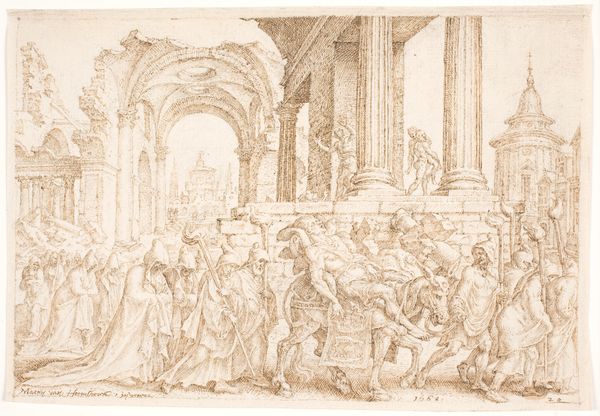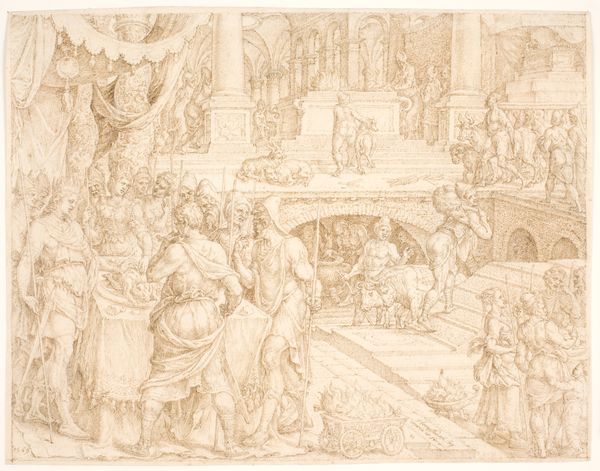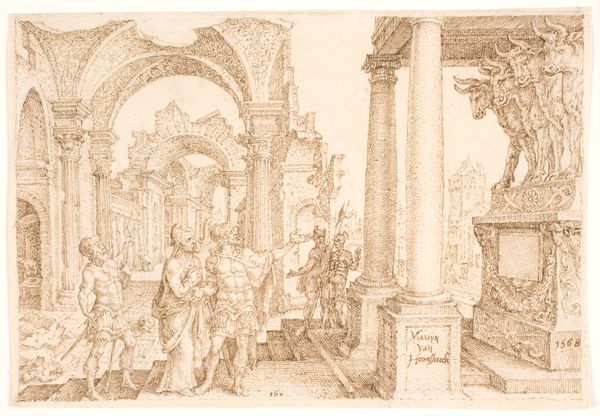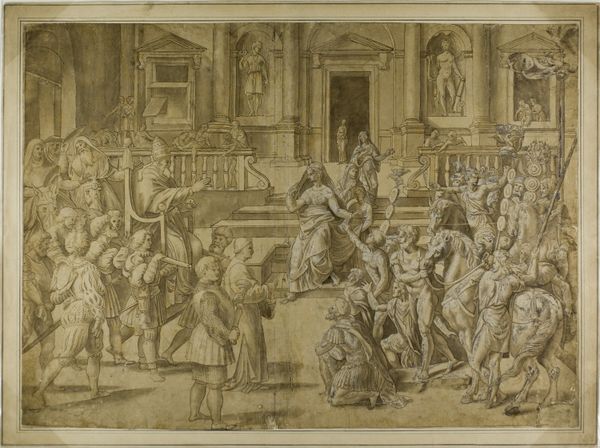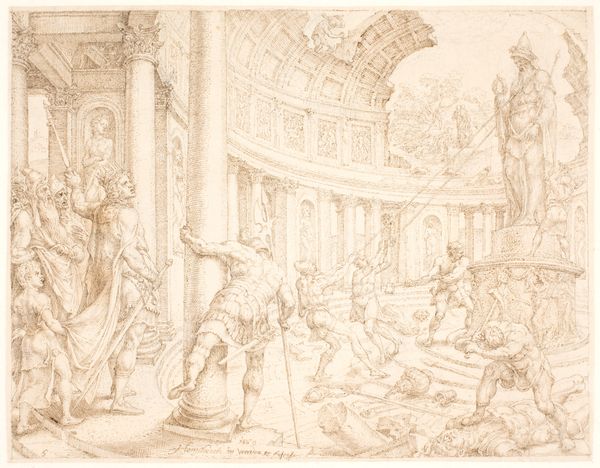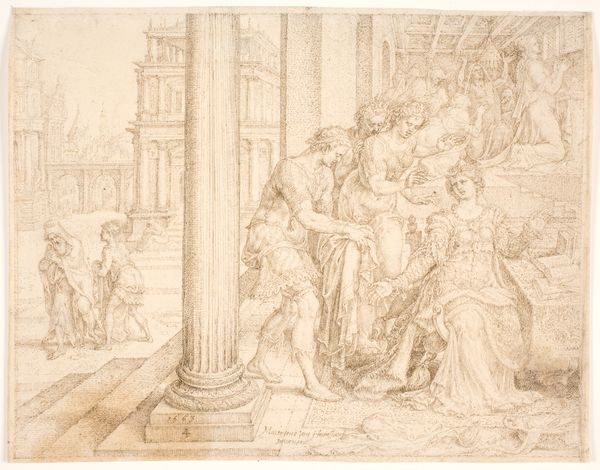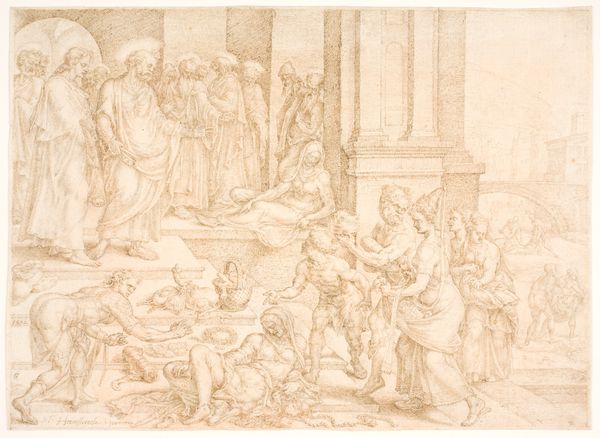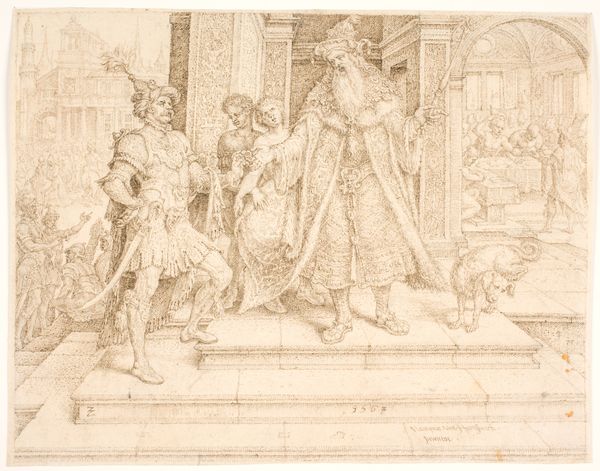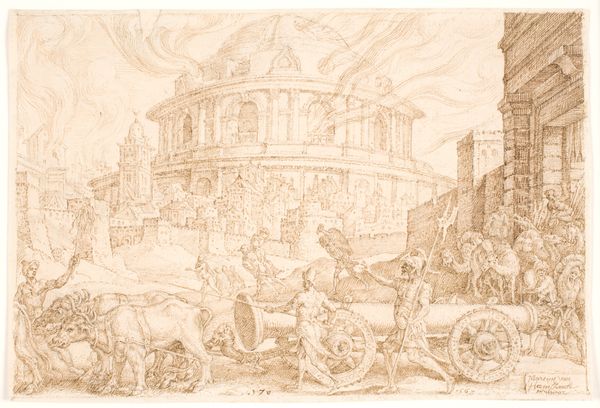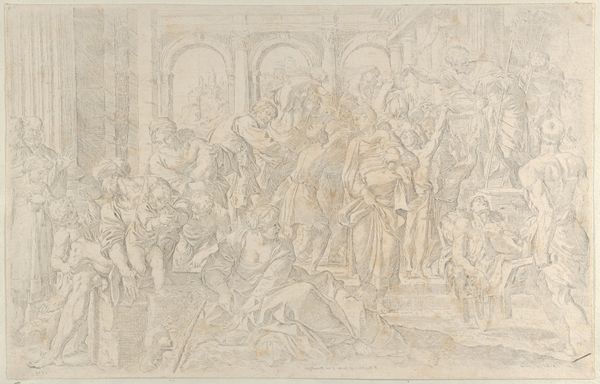
Josias befaler, at hestene skal fjernes og solvognene brændes 1567 - 1570
0:00
0:00
drawing, ink
#
drawing
#
mannerism
#
11_renaissance
#
ink
#
history-painting
#
academic-art
Dimensions: 201 mm (height) x 259 mm (width) (bladmaal)
Editor: So, this drawing from around 1567 to 1570 is by Maarten van Heemskerck. It’s called “Josias befaler, at hestene skal fjernes og solvognene brændes,” rendered in ink. I'm immediately drawn to the chaotic energy; there's a lot happening. What does it tell you? Curator: Look at how Heemskerck depicts labor. This isn’t just a scene of religious reform; it’s about the destruction of specific objects and the manpower required for it. Observe the sheer number of figures actively dismantling these symbols – pulling down horses, smashing chariots. It makes you think about the production of art and ritual objects and what it meant to destroy that investment, those resources. Editor: That’s a good point. The manpower really stands out. The actual drawing… its material presence, isn’t particularly impressive. I mean, it is just ink, but do the labor put into this drawing, maybe relates to the labor in the depicted scene? Curator: Precisely! The relatively 'humble' material – ink on paper – emphasizes that juxtaposition. What do you make of the architecture, the elaborate structure looming behind all this activity? Editor: It seems intentionally grand, a monument about to be disrupted. Is Heemskerck using it to contrast this rigid societal structure, built over the long term, with the brute labor destroying these symbols? Curator: Yes, think about who commissions and consumes art. Royal patronage often funded both religious idolatry and artistic creation. Heemskerck might be suggesting a cyclical relationship between production, consumption, and destruction in the service of power. Notice how he shows all these objects of labour, how society makes it, breaks it and replaces it. What does this observation change to your impression? Editor: It reframes my initial reaction completely! Instead of just seeing chaos, I now see commentary on labor and its place within society. The constant need of construction, deconstruction and reconstruction. Curator: And on how even acts of religious or political upheaval are ultimately materialized through labor and the manipulation of materials.
Comments
No comments
Be the first to comment and join the conversation on the ultimate creative platform.
